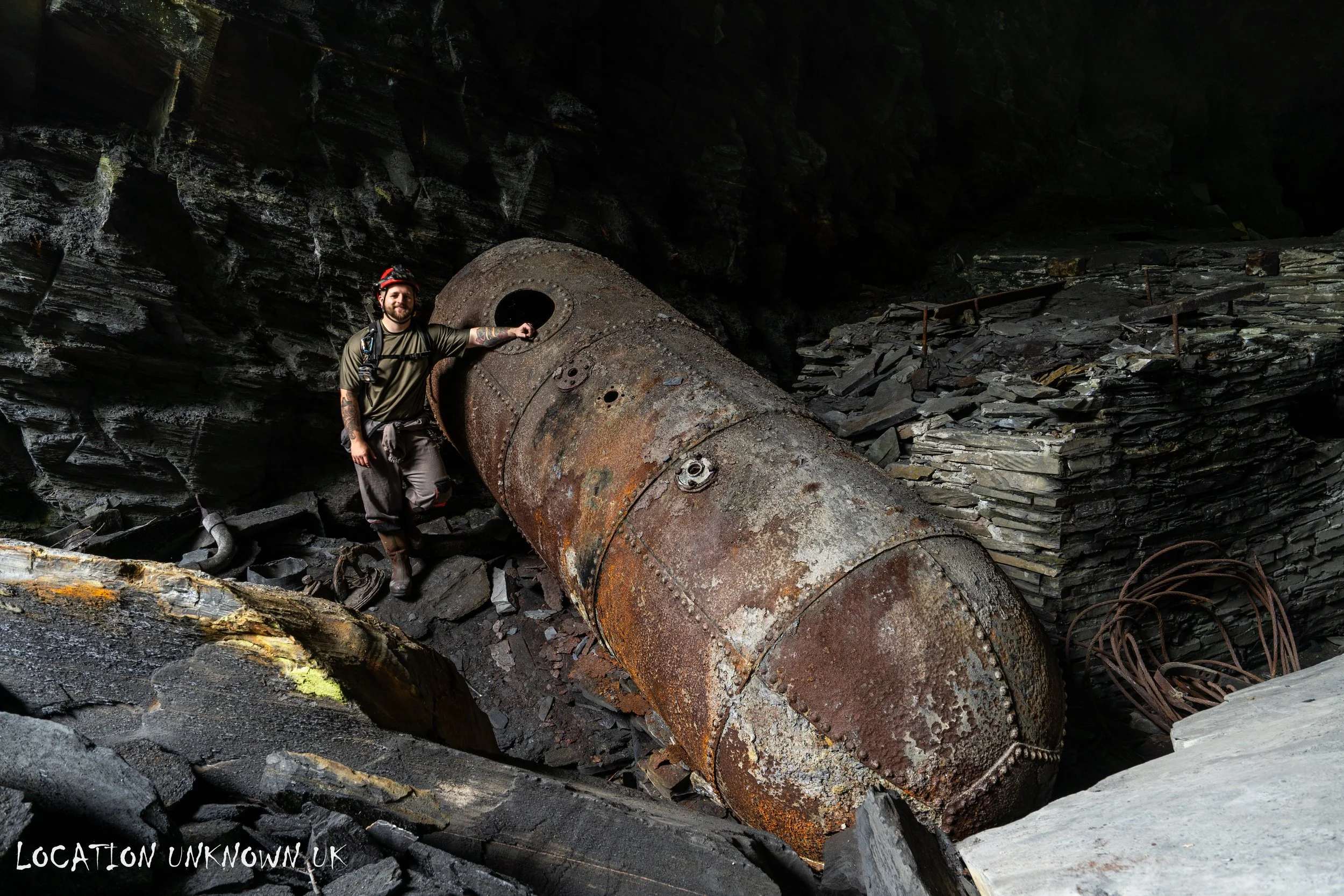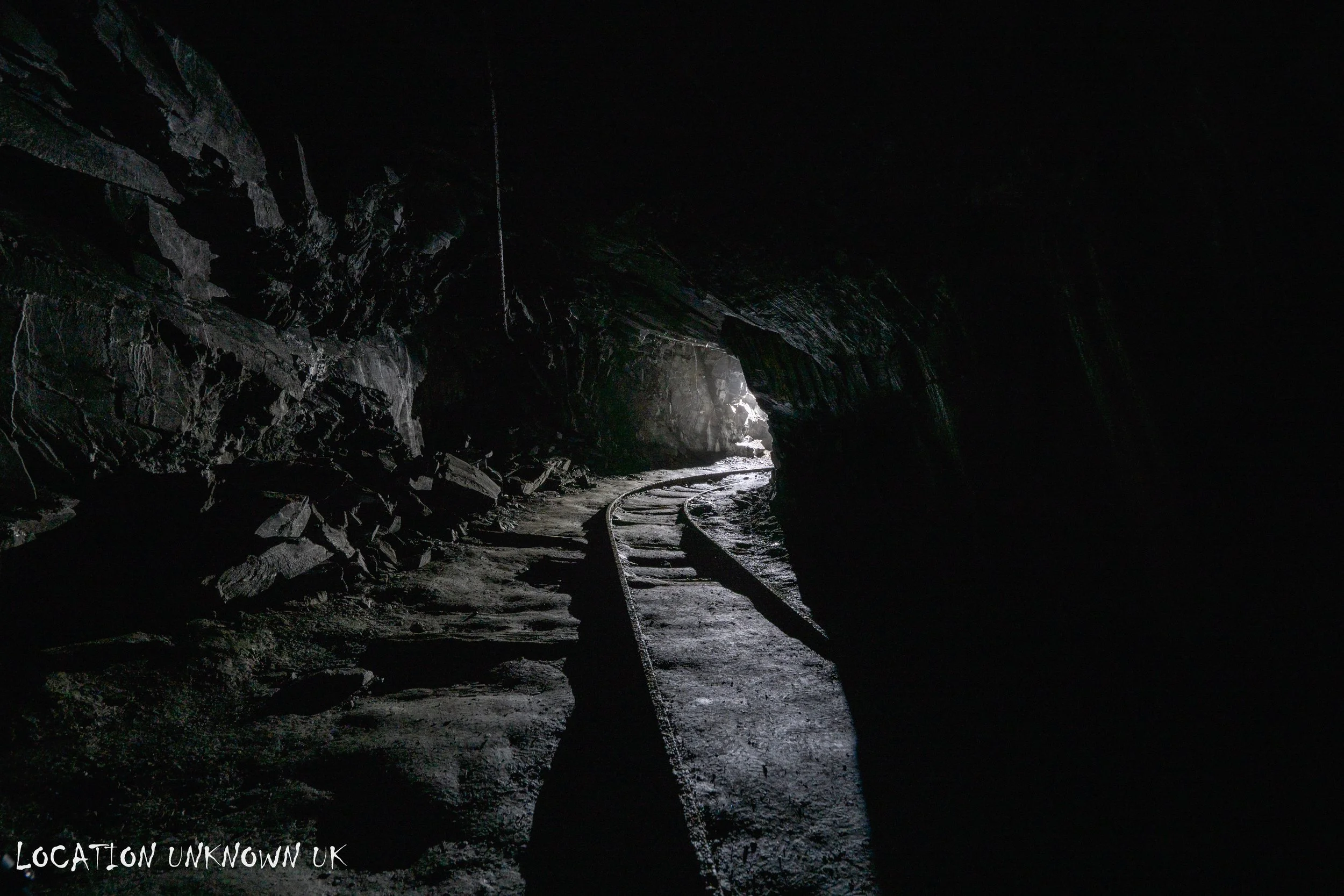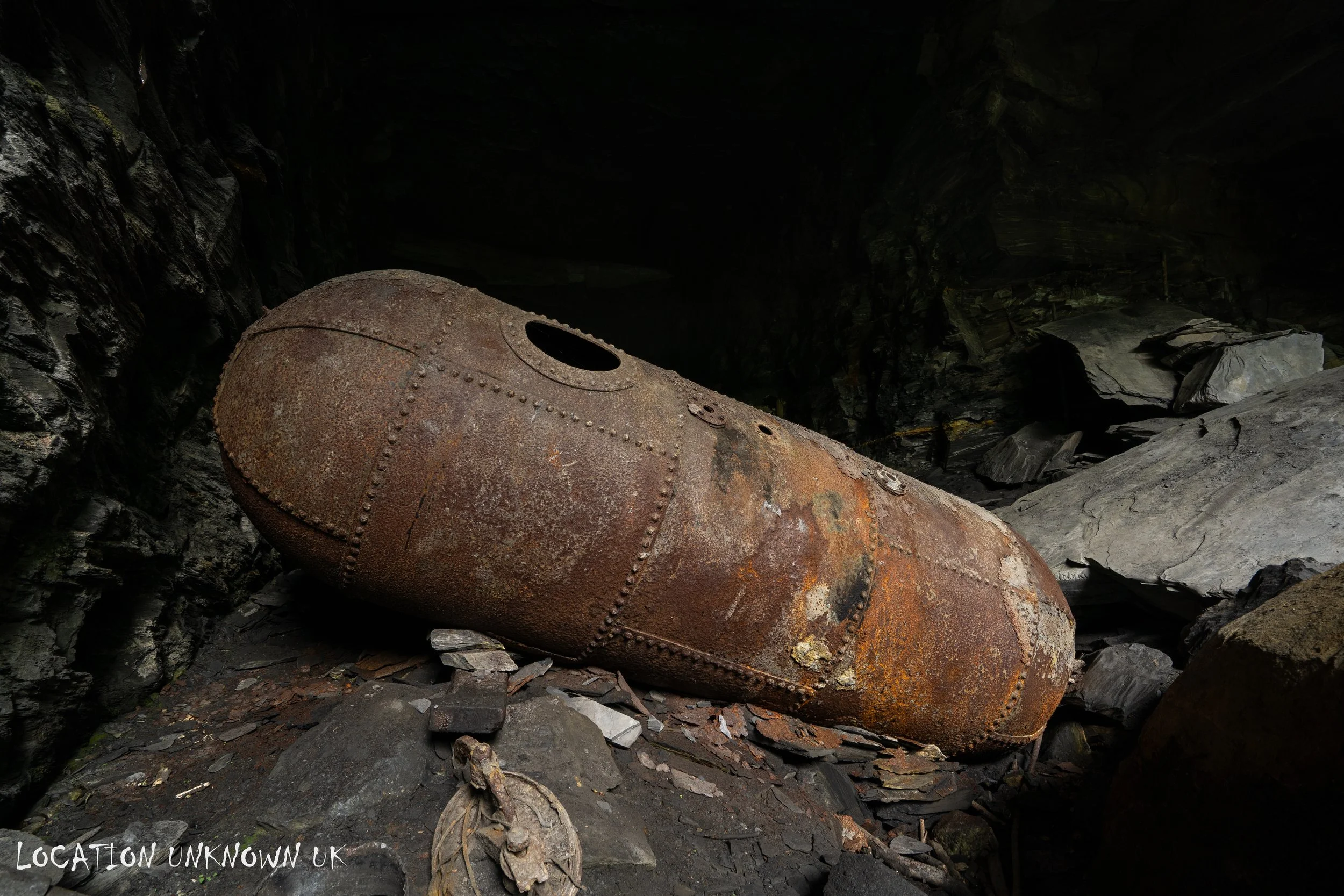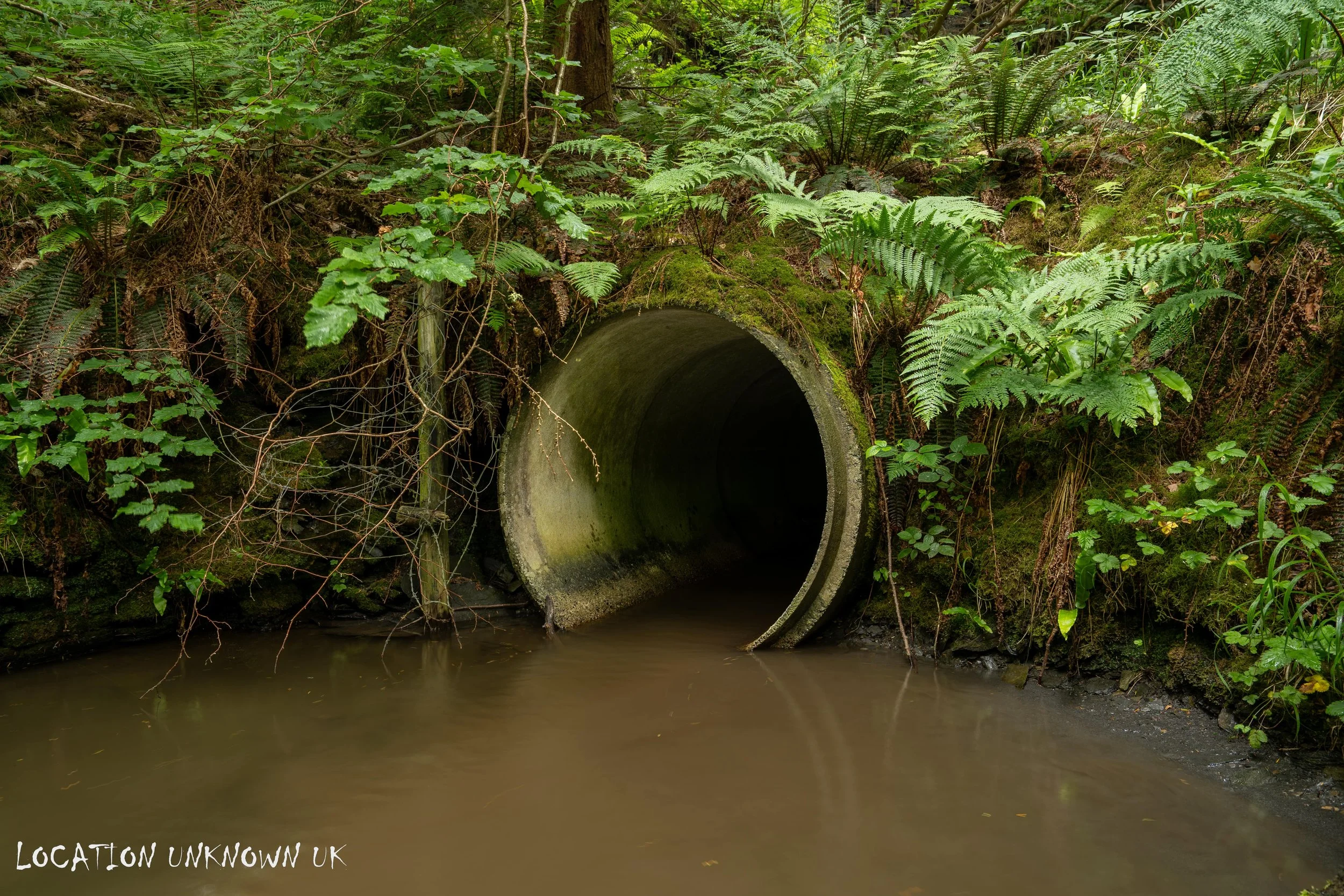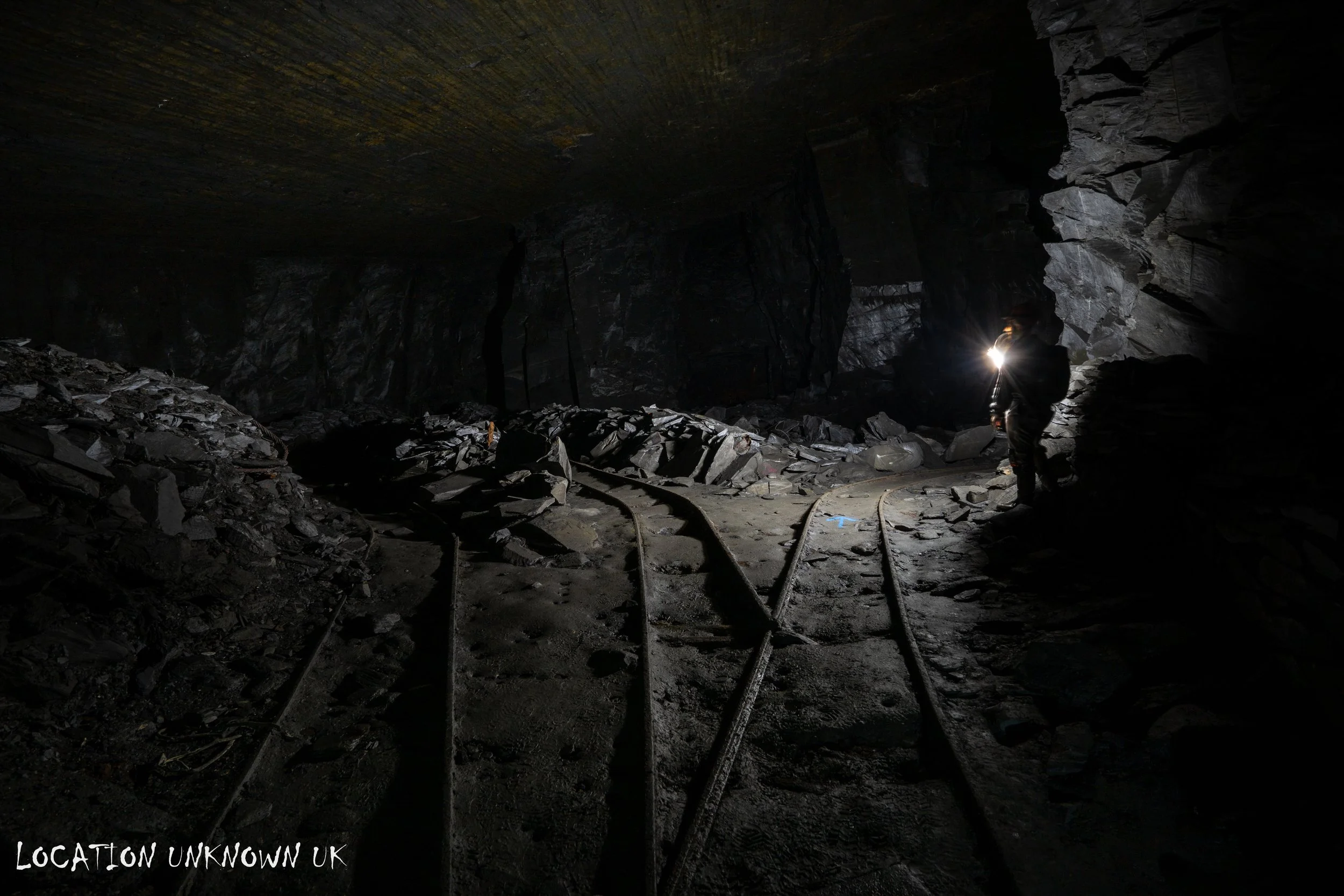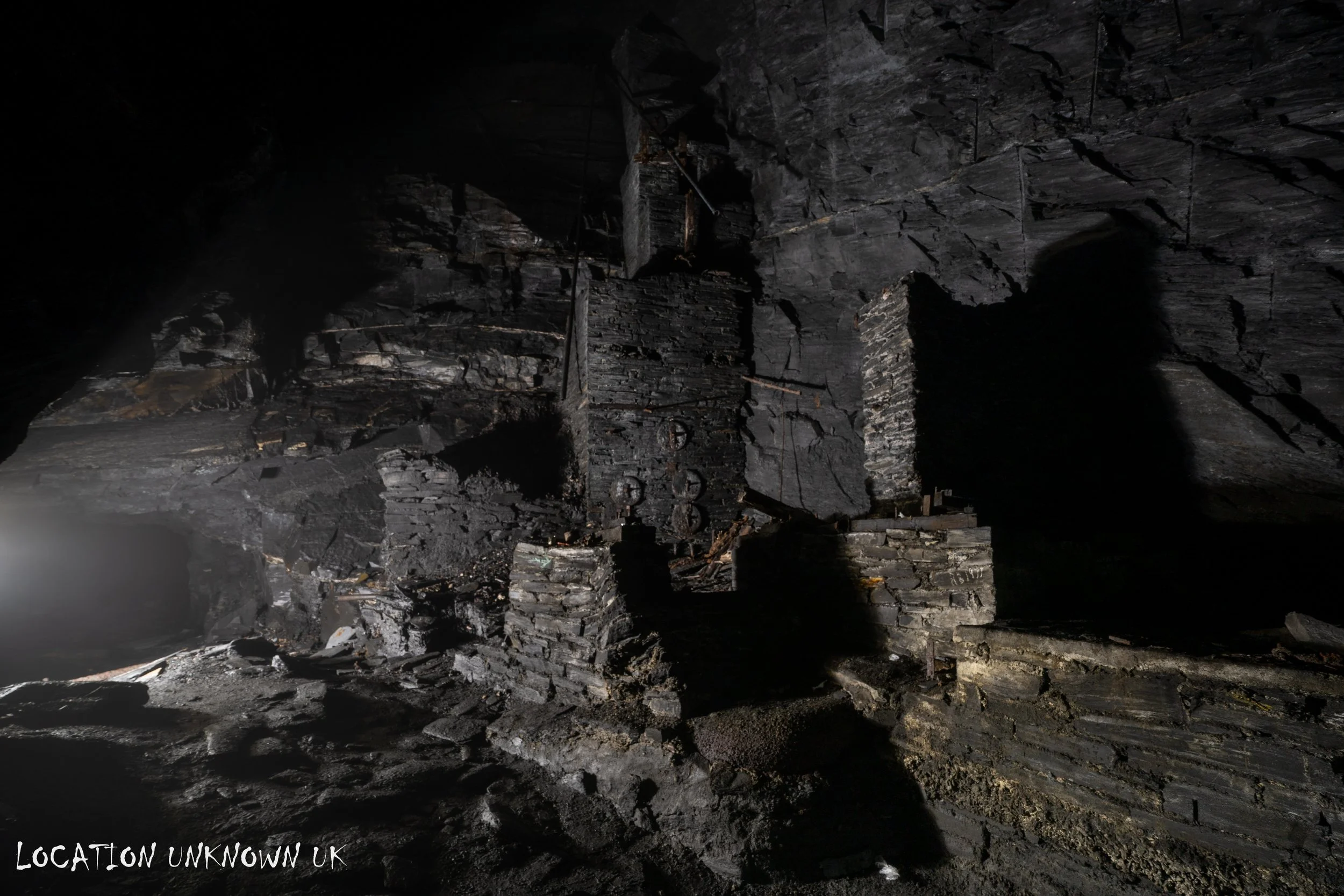Penarth/Cambrian Slate Mine - Llangollen
The Welsh Valleys are absolutely littered with underground quarries, and it's how many of these small towns and villages have prospered throughout history. These two locations had been on the list for some time, so it seemed like a good idea to tick them both off in one trip.
We started at Cambrian, wandering around the surface spoil heaps, before following our noses to the river, where we stumbled across an inconspicuous concrete RCP. At just 4ft high, it was a bit of a stoop, especially with camera gear but thankfully it only ran for about 15 metres before opening out into the tail end of the former workings.
Right away, the chamber splits in two. Both paths follow the same general route and reconnect further in, but the right-hand side offers what can only be described as rainforest-like surroundings. Deeper in, the old trackbed remains in situ, along with relics like winches and aged timbers scattered about.
Towards the end, we came across an open pit to the surface, with a thick mist settling in. It was surreal seeing mist inside somewhere underground. In this chamber sits a large metal tank, presumably once used for oil storage.
After wrapping up at Cambrian, we drove a short way to Penarth and began the steep climb up into the Welsh hills in search of the former quarry. It’s said to be a 30-minute walk but doing it during a heatwave, after already exploring a slate mine, had us questioning our life choices.
Several rest stops and gallons of water later, we were rewarded with the sight of a large quarry and two ominous-looking holes set into the rockface. We headed first into the section that appeared to be the most recently worked, where loose shale dominated and the tunnels didn’t extend too deep likely because of the unstable ground.
The older workings were far more interesting, with old tracks and winches scattered seemingly at random. A nicely preserved tramway incline gave us a glimpse into the higher levels, but with the heat and the day catching up to us, we called it there, vowing to return and explore the rest another time.
History
“Penarth Slate Mine, located above Carrog near Corwen in Denbighshire, embarked on significant commercial operations around 1868, though small-scale extraction may have predated this. Its expansion was greatly aided by the arrival of the railway, which enabled more efficient transport of its slate. At its peak, the quarry employed approximately 150 men, transitioning from open-pit workings to an extensive underground mine spanning three levels. Penarth specialized primarily in slate slabs rather than roofing tiles. Despite periods of fluctuating production and a temporary closure in 1890 due to financial difficulties, it reopened in 1895 and saw increased output in the early 1900s with the introduction of water- and oil-powered sawmills. Modernization continued with the installation of oil and gas engines for air compressors and cutting machinery, including rare reciprocating shot-saws. However, Penarth never reached the immense scale of larger Welsh quarries like Penrhyn or Dinorwig, and its production dwindled by the time of its final closure in 1932.
Cambrian Slate Mine, situated west of Glyn Ceiriog, has a deep history of slate extraction dating back to the 17th century, with established commercial production commencing in 1857 under the Cambrian Slate Company Ltd. This company invested substantially in infrastructure, including tramways, an incline, and a water engine, with an ambitious target of 4,000 tons of slate per year. A pivotal moment for the Cambrian mine was the opening of the Glyn Valley Tramway in 1873. This narrow-gauge line, initially horse and gravity-powered, revolutionized the transport of slate to market and even carried passengers from 1875. The mine developed into a complex underground network across four levels, employing up to 90 men and producing around 2,000 tons of roofing slate annually at its peak. While steam locomotives later replaced horses on the tramway, its eventual cessation of operations in 1935, coupled with rising wages and price controls, contributed to the quarry's decline. The Cambrian Slate Mine ultimately closed in 1946-47, largely due to labour shortages and financial difficulties. Both Penarth and Cambrian, alongside numerous other sites, were integral to the Welsh slate industry, which at its zenith in 1898 employed 17,000 men and produced half a million tons of slate annually, shaping the economic and cultural fabric of North Wales. Notably, Cambrian-age Welsh slate has earned the prestigious Global Heritage Stone Resource (GHSR) status”.

